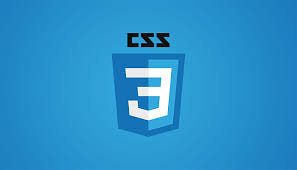🎨 CSS Tutorial for Beginners: Master Styling the Web Step by Step
📌 Introduction: What is CSS?
CSS (Cascading Style Sheets) is the language used to style and design HTML pages. While HTML structures your content, CSS brings it to life — controlling colors, fonts, layouts, and animations.
If HTML is the skeleton of a web page, CSS is the skin, clothes, and makeup. Whether you’re building a personal blog or a professional website, learning CSS is essential for modern web design.
🧾 Table of Contents
- What is CSS?
- How to Add CSS to HTML
- CSS Syntax Explained
- CSS Selectors
- Colors, Fonts, and Text Styling
- Box Model in CSS
- Layout Techniques: Flexbox and Grid
- Responsive Design with Media Queries
- CSS Transitions and Animations
- Best Practices & SEO Tips for CSS
🔹 1. What is CSS?
CSS stands for Cascading Style Sheets. It allows developers to:
- Customize fonts, colors, spacing, and positioning
- Make pages responsive across devices
- Improve user experience with smooth animations
Example use case: Changing all your website’s buttons from blue to green in one line of code.
🔹 2. How to Add CSS to HTML
There are 3 ways to apply CSS:
🧷 Inline CSS:
Added directly inside HTML tags.
html<p style="color:red;">This is red text.</p>
📄 Internal CSS:
Placed inside <style> tags within the HTML file.
html<head>
<style>
body { background-color: lightblue; }
</style>
</head>
🌐 External CSS (Best Practice):
Linked via a separate .css file.
html<link rel="stylesheet" href="styles.css" />
🔹 3. CSS Syntax Explained
selector {
property: value;
}
Example:
h1 {
color: blue;
font-size: 24px;
}
h1is the selector.colorandfont-sizeare properties.blueand24pxare the values.
🔹 4. CSS Selectors
CSS selectors target specific HTML elements:
*– Universal selectorp– Element selector.class-name– Class selector#id-name– ID selectordiv > p– Child selectora:hover– Pseudo-class selector
Pro Tip: Use classes for styling reusable elements.
🔹 5. Colors, Fonts, and Text Styling
🎨 Colors:
body {
background-color: #f1f1f1;
color: #333;
}
🔤 Fonts:
p {
font-family: 'Arial', sans-serif;
font-size: 16px;
}
📐 Text Formatting:
p {
text-align: justify;
text-transform: uppercase;
letter-spacing: 1px;
}
🔹 6. Box Model in CSS
Every HTML element is a box with:
- Content (text, image)
- Padding (space inside box)
- Border (line around box)
- Margin (space outside box)
div {
padding: 10px;
border: 1px solid black;
margin: 20px;
}
Use DevTools in your browser to visualize the box model live.
🔹 7. Layout Techniques: Flexbox and Grid
📏 Flexbox:
Great for 1D layouts (rows or columns).
.container {
display: flex;
justify-content: center;
align-items: center;
}
🔲 CSS Grid:
Great for 2D layouts (rows + columns)..grid {
display: grid;
grid-template-columns: 1fr 1fr;
}
🔹 8. Responsive Design with Media Queries
Make your site mobile-friendly:
@media (max-width: 600px) {
body {
background-color: lightgray;
}
}
Combine with viewport meta tag in HTML:
<meta name="viewport" content="width=device-width, initial-scale=1.0">
🔹 9. CSS Transitions and Animations
✨ Transitions:
button {
transition: background-color 0.3s ease;
}
button:hover {
background-color: blue;
}
🎞️ Keyframe Animations:
@keyframes slideIn {
from { left: -100px; }
to { left: 0; }
}
🔹 10. Best Practices & SEO Tips for CSS
- Use external CSS files for faster loading
- Minify CSS for production
- Avoid
!importantoveruse - Name classes meaningfully (e.g.,
.btn-primary) - Keep a consistent spacing scale
- Use responsive units like
%,em,rem - Avoid inline CSS — it can slow down your site and reduce SEO performance
📌 Conclusion
CSS is the secret sauce that makes websites beautiful and responsive. By learning CSS, you’re one step closer to becoming a web designer or front-end developer. Keep practicing, explore real-world projects, and play with layouts to master it.

